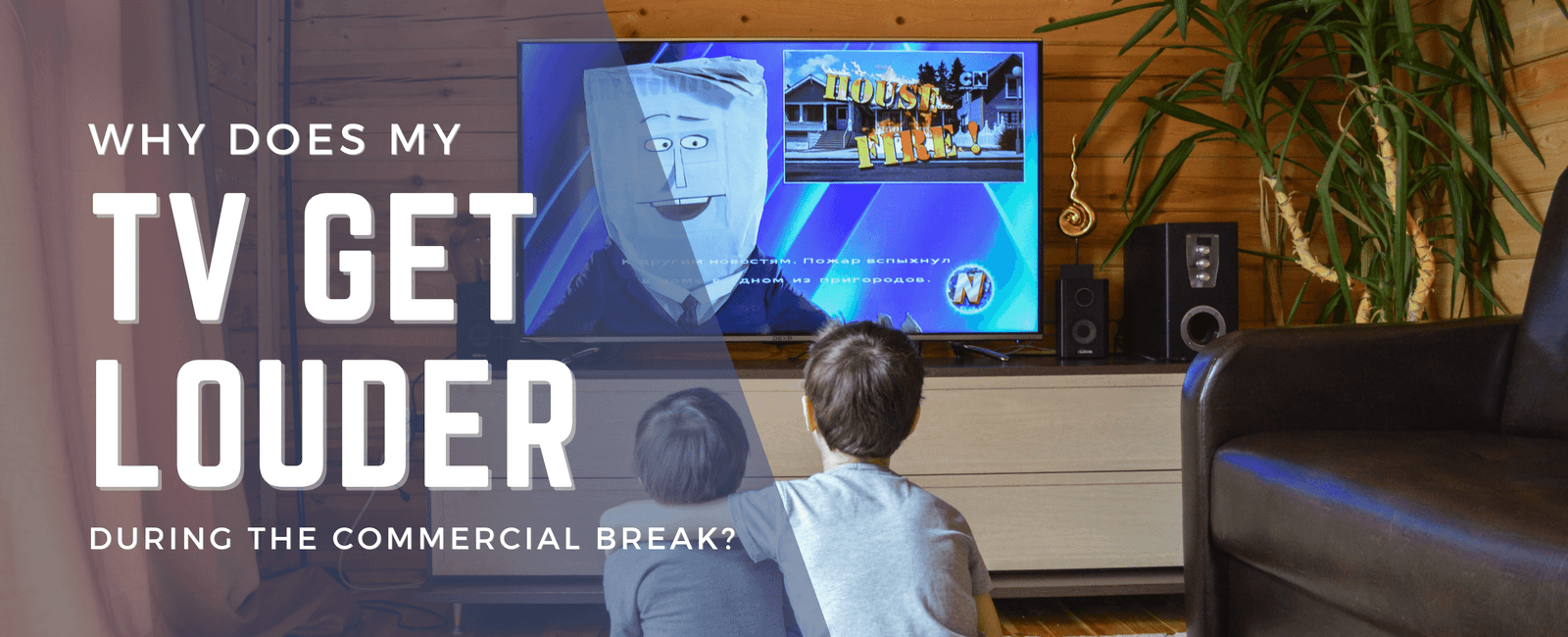Why Does My TV Get Louder During Commercials?

TV commercials can be loud enough to force you to cover your ears—even when you haven��’t changed your volume or touched the remote. More often than not, viewers report seeing advertisements that appear louder than the show they are watching.
Have you ever wondered what exactly is going on here? Read on to find out!
Why Does Your TV Get Louder During Commercials?
Commercials are meant to attract your attention, and advertisers are always looking for new ways to guide the people sitting in front of the screen back towards the action.
Broadcasters don’t actually turn up the volume during commercial breaks—nor does the volume of your TV increase by itself. The Federal Communications Commission (FCC) has actually even put a limit on the signal strength advertisers can use during a commercial break.
These rules are sometimes referred to as the Commercial Advertisement Loudness Mitigation or CALM Act. The regulations state that the sound you hear during an ad should not exceed the loudest part of the program you are watching.
The trouble is, the FCC doesn’t have a system to track the volume level of commercials and enforcement is dependent on complaints filed by the general public. It’s rather unclear whether or not regulations like the CALM act will extend to other sVOD/tVOD and OTT streaming platforms. For now, many appear to be free to use any volume they��’d like for both programs and advertisements. In some cases, streaming platforms even use different volume levels for different programs—and this too can make for an unpleasant viewing experience.
A Show’s Volume Predicts How Loud Ads Are
While the FCC mandates that commercials cannot be louder than the show they accompany, many publishers chose to align the volume of an advertisement to the show’s average volume.
The trouble is, the volume level of a modern tv show or movie can vary wildly. Some parts, like dialogue, are in rather low volumes. Other sequences, like action scenes with gunfights or explosions can be much louder than other parts of the show—and this can have a big impact on the show’s average volume! If a commercial break occurs in the middle of something relatively quiet like a dramatic dialogue between two main characters, the commercial might sound particularly out of place.
Since the regulation allows for a commercial to be as loud as the loudest part of a program, some advertisers and publishers take advantage of this—and really push the limits of what you might feel comfortable hearing during your next commercial break.
Many advertisers create content that is designed to grab your attention—and a number of other audio editing tricks can help them to do that. For example, using a narrow dynamic range can make an ad sound louder which can grab your attention.
Some brands take this even further by ensuring that their commercials match the loudest part of TV shows. For example, a brand may design a whole commercial that matches the volume of a scene where a character is screaming at the top of their voice—which means the commercial will almost certainly be louder than what you were watching.
The advertisements are recorded in a way that they sound louder than the accompanying show. Therefore, your TV doesn’t get louder during commercials technically. In addition, this issue is common to all brands of television.
Moreover, broadcasters are legally not allowed to increase volumes during commercials.
What Can You Do to Make Commercials Sound Softer?
One of the first things you can do to fight back against this problem is to register a complaint with the FCC when you hear a commercial that is louder than it should be. The commission will evaluate your complaint and take action based on what they find.
You can even file your complaint online using the FCC’s web form here
There are a number of after-market devices you can buy called ‘volume normalizers’ that can adjust the audio output of your television so that you aren’t started by loud ads on tv.
The good news is that a number of modern smart tvs include audio normalization features. This article includes a few tips for enabling these settings on some popular smart devices.
Using this feature can help to adjust the volume of commercials you’ll see during your TV show. Depending on your TV manufacturer, the setting may have a different name, but you ought to be able to find it. If not, a number of smart speakers and home theater systems also include these features.
Loud Noises
Since many commercials are recorded to match the loudest parts of TV shows, they really are louder than the show you are watching. It’s not just you—and the broadcaster isn’t turning up the volume.
While this problem won’t get better until regulators begin to react to the changing digital video landscape, there are some solutions like audio normalizers that can help you keep your hearing—and your sanity—a little while longer.
Table Of Contents
Related Posts
Legal Stuff

